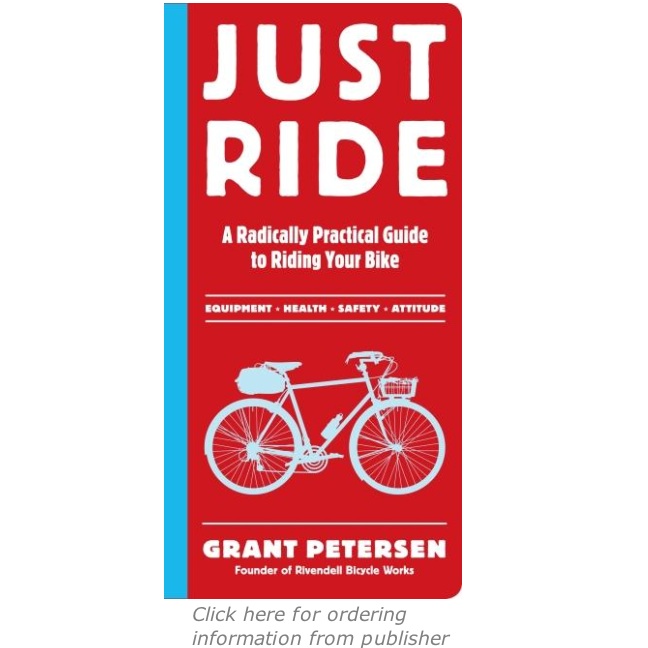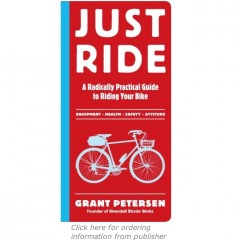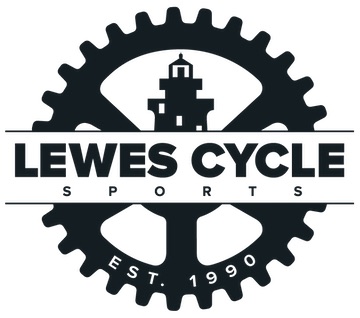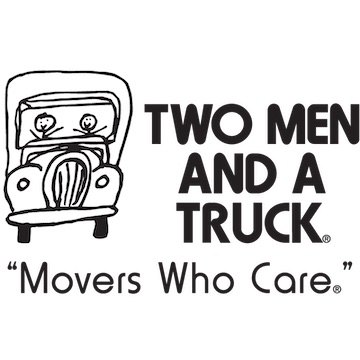No ride is too short

From Grant Petersen’s “Just Ride: A Radically Practical Guide to Riding Your Bike“:
One of the problems with becoming a serious bike rider is that you stop going for short rides because somewhere along the line it sinks in – falsely – that a ride you don’t have to suit up for doesn’t count. That’s your inner racer talking, you need to shut it up.
Many rides are too long. They bake you, soak you, stress your joints, numb your nerves, wear out your muscles, and take time away from a well-rounded life. My own ride limit these days is about four hours. My mood doesn’t change after four hours, but no matter how beautiful the ride is, how great the weather, how fantastic the companionship, four hours is plenty for me. Maybe your limit is half that or twice that, but you do have an upper limit.
No ride is too short. Carbs aside, is a small spoonful of your favorite ice cream too little to bother with? Is a two-minute massage not worth the trouble? Pedaling a bike is the same way. It’s pure fun, no matter how short it is. Five minutes of riding after a day of sitting or standing is a great way to unwind.
A five-minute ride in the neighborhood may sound too short, but if your bike has double-sided pedals and you don’t have to waste time donning your serious bike rider costume, you can just get on your bike and go. You can do it on a whim any time. Don’t evaluate a short ride in physiological terms.
Easy pedaling is good thinking time. I get all kinds of ideas for bikes, products, and general life solutions during short rides. The super grand solution often come after twenty minutes, but you’ll get some good ones within five; and if you don’t, it’s still better than five minutes’ worth of sitting down and eating five minutes’ worth of chips while viewing two minutes worth of television commercials. The solutions and ideas don’t happen during fast-paced club rides, or rides where you’re struggling every pedal stroke. Only on easy bike rides.
I’m not saying don’t ride the Hotter ‘n Heck Century or the Dreadful Double. Ride the hard rides that challenge you and feel good to complete. Go on the forty-mile club ride you wouldn’t consider riding solo. But make most of your rides more pure fun than those. That usually means shorter.
Excerpted from JUST RIDE: A Radically Practical Guide to Riding Your Bike, by Grant Petersen. Used by permission of Workman Publishing Company, Inc. All rights reserved.







6 Responses
There really is no point to all of this. The best advice: wear the clothes that work best for you, ride the bike that works best for you, choose the type of ride that works best for you. And mix it up. You’ll figure it out. The type of person who does nothing but ride and ride fast is doing so for reasons other than getting the best kind of exercise and s/he is not going to listen to Peterson. The rest of us who bike a lot aren’t in danger of doing too much biking. We walk our dogs and hike and garden and dance and, well you get it. We tend to be all around active folk who maintain an active lifestyle. As for the length of ride, decide what’s right for you whether it’s 2 miles or 200. There’s room for all of us and all types of ways to enjoy biking. And if you actually ride for transportation, you know that no ride is too short. As for blinky lights, the next time you get hypnotized by that flashing light at a railroad crossing, remember not to get hit by the train.
Why so down on the article? Its trying to encourage people to-do more with the bicycle than just go on longer and harder rides. It doesn’t say thats bad, but its trying to get people to see that they can do that plus go to the store down the street.
Well, that’s kind of what I’m saying in my response actually. Figure out what works for you. This particular article isn’t so bad, none of it is actually, but the author shouldn’t push people not to use clipless pedals or special underwear or blinking lights, that sort of thing. It’s almost as if in the process of encouraging folks to be willing to do less, he’s discouraging others from using beneficial tools or stretching their limits. And putting down some tools that are helpful and some that make people safer. BTW, I ride all lengths of rides, from very short to centuries, and most of my riding is for transportation. Last year, I rode 4000 miles and I don’t clip in. But I am aware of the benefits and may try clipless pedals in the near future. So it really does take all kinds and one size does not fit all. The author is trying to say that, but in the process, he really isn’t. And if you read my response, it really isn’t negative. It’s telling people to find their own path. That’s all. The last bit about the blinking lights is sarcastic, but that’s because he really is off base with this. I use a combination of blinking lights and solid lights. You know, bringing attention is a good thing. Which is why blinking lights are used on emergency vehicles, at construction sites, to warn of upcoming traffic signals, to regulate intersections where stop signs are in use, at railroad crossings, on school buses, etc. And there is no evidence at all that using flashing lights increases accidents. He’s speculating and overthinking this. So in encouraging people that they don’t need anything special, etc. I think he’s going too far and doing a bit of a diservice.
I think your first line about sums up your negativity. “There really is no point to all of this.”.
I strongly disagree. There is a very strong point to this. This article is targeted to a segment of the cycling population that only rides for hard core exercise, which is not a small segment of the population. At one point in my 30 year cycling history I was this person. I raced in T-Town. I would only go out on a ride if it was a grueling training ride or race. I forgot that bicycles served other purposes. Before this time I used to ride my bike to work; school; etc. During these years I stopped that. In hindsight I wish I had read this back then.
The goal of this excerpt is to remind people of that there is more to cycling than hard core exercise type rides. Thats all. Its not mean to be a critique of what tools, clothing or equipment should or should not be used. Its just a note that will resonate with a decent size of the cycling world.
I think its really the commenter rather than the author who is over thinking in this case.
of course like your web site but you need to take
a look at the spelling on quite a few of your posts.
A number of them are rife with spelling issues and I find it very troublesome
to tell the reality nevertheless I will surely come again again.
I loved (and very much appreciated) this article,along with others by this author. Personally, I found the practical, non-elitist advice — as in the one about shoes — invaluable … Comforting even, since I really need to ride, and can’t afford all the accessories.
THANK YOU!
~ Sandy LeonVest